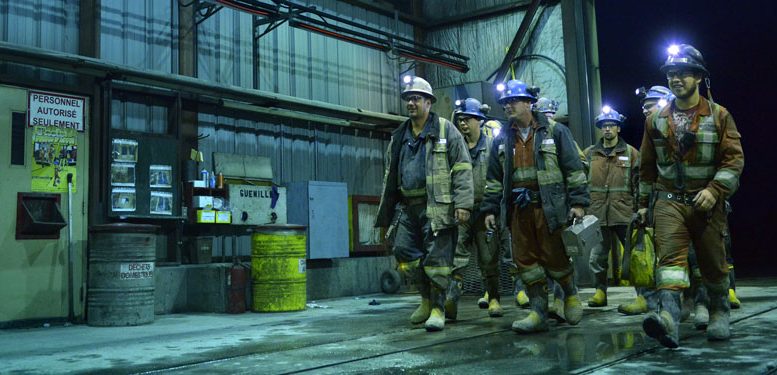VANCOUVER — Hecla Mining (NYSE: HL) saw untapped potential at the Casa Berardi gold mine when it swooped in with a “white knight,” $796-million offer for Aurizon Gold in early 2013.
Since then, the company has invested in unlocking that upside, and its efforts appear to be paying off.
Hecla reported record throughput at the operation in the second quarter. It also boosted contained gold ounces by 23% at the property last year, after identifying “new resource trends near surface and underground” at the West Mine area.
Casa Berardi lies 95 km north of La Sarre, Que., and straddles a 37 km piece of the Casa Berardi fault. The property hosts classic Archean, sedimentary-hosted lode gold mineralization, which the company says is “superimposed on a continuous graphitic mudrock unit corresponding to the Casa Berardi fault plane.”
The mine has proven and probable reserves of 9.3 million tonnes grading 3.69 grams gold per tonne for 1.31 million contained oz. gold, and measured and indicated resources of 12 million tonnes averaging 3.12 grams gold for 1.5 million contained ounces.

A loader in Hecla Mining’s Casa Berardi underground gold mine in Quebec. Credit: Hecla Mining.
Lawrence Radford, Hecla’s senior vice-president of operations, said during a recent conference call that the “big story at Casa” is increased throughput made possible by open-pit material. The company has increased mill rates by more than 100% since acquiring the mine and reported a record of nearly 3,300 tonnes per day in the second quarter.
The major driver has been Casa’s East Mine Crown Pillar pit, which began contributing ore last year. The deposit sits near the East mine, and is expected to produce 30,000 oz. gold annually for six years.
“We’re not stopping there,” Radford said. “The team continues to look into increasing the throughput … we’re currently running a trial on additional grinding horsepower.”
Casa Berardi could make between 150,000 and 165,000 oz. gold in 2017, at all-in sustaining costs of US$1,150 per ounce.
“Our second half at Casa Berardi not only has higher grades, but also reduced stripping costs,” president and CEO Phil Baker added. “We’re expecting significant free cash flow from the mine.”
Hecla is on the lookout for more open-pit mineralization along the mine trend. The company reports its new 134 pit is scheduled to be incorporated into reserves and resources by year-end, while permits are expected in early 2019.

Casa Berardi lies 95 km due north of La Sarre, Que., and straddles a 37 km piece of the Casa Berardi fault. Credit: Hecla Mining.
Furthermore, the company indicated in its mid-year exploration update that surface drilling due west of Casa Berardi’s West Shaft cut “strong mineralization” up-dip of the Lower Inter and South West zones, including 2 grams gold over 55 metres from 81 metres deep in hole 17-766.
“We plan to evaluate the entire Casa Berardi fault corridor from surface to search for more open pits and to test if we can combine them into larger, more productive pits,” senior vice-president of exploration Dean McDonald said. “The extensions of many mineralized zones down-plunge throughout the mine show huge potential to extend the life.”
Meanwhile, Hecla is also exploring the underground element at Casa Berardi. The company reported five underground drills during the second quarter, which were targeting the 118, 123 and 124 zones. It hopes to “refine stope designs and expand reserves and resources.”
Furthermore, Hecla is turning to innovation to streamline the Casa Berardi operations. The company reports its automation project at the 985 drift is “proceeding well,” with two Sandvik, 40-tonne automated trucks expected to operate by the end of next year. The driverless technology is expected to lower the number of trucks and associated maintenance and personnel costs.
BMO Capital Markets analyst Andrew Kaip has a “market perform” rating on Hecla, and a $6-per-share price target.
“Since mining of the open pit began last year, grades have been reconciling in line with the resource model,” Kaip wrote after a Casa Berardi site visit in August. “We expect production to increase … as grade increases and the strip ratio decreases.”
Hecla shares have traded within a 52-week range of US$4.61 to US$7.64 per share, and closed at US$5.13 at press time. The company has 399 million shares outstanding for a US$2.1-billion market capitalization, and reported US$202 million in cash and equivalents at the end of June.


Be the first to comment on "Hecla sees ‘huge potential’ along Casa Berardi trend"